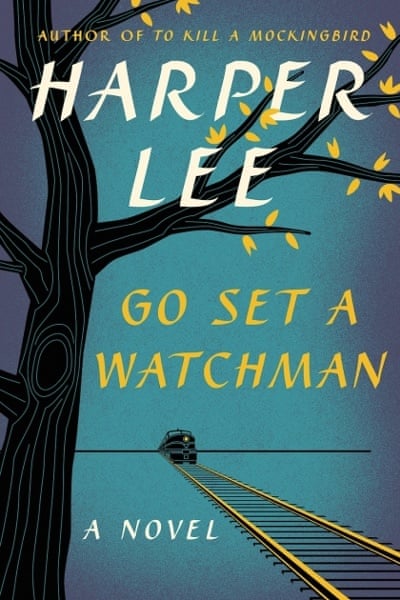Giving little clue to the contents of what must be the the decade’s most anticipated novel, the cover for Harper Lee’s follow-up to To Kill a Mockingbird has been revealed.

With less than three months to go before the publication of Go Set a Watchman on 14 July, William Heinemann has unveiled a jacket that harks back in theme to Lee’s Pulitzer-winning debut. It shows an image of a silhouetted bird on a leafless branch against an orange background, and was launched alongside a series of Go Set a Watchman social media channels on Facebook, Twitter, Instagram and Tumblr - all of which, it is to be assumed, will not be visited by the author herself.
The orange jacket will be for the UK market, with HarperCollins in the US simultaneously unveiling its own take on the novel for American readers: a tree, again, but with no bird in sight this time. Set against a dusk-coloured, blue backdrop, the US jacket features a train approaching.
Lee, who is 88, has not spoken directly to the press since news of her unexpected sequel to To Kill a Mockingbird was announced in February. On 3 February, she said in a statement issued by her publisher that she had completed Go Set a Watchman in the mid-1950s, before she wrote To Kill a Mockingbird.
Lee said in her statement that she “hadn’t realised it had survived, so was surprised and delighted when my dear friend and lawyer Tonja Carter discovered it”.
The novel features Scout – Jean Louise Finch – returning to the fictional town of Maycomb from New York, to visit her father, the lawyer Atticus.

“She is forced to grapple with issues both personal and political as she tries to understand both her father’s attitude toward society, and her own feelings about the place where she was born and spent her childhood,” said Heinemann.
Lee’s decision to publish has since come under heavy scrutiny, with her biographer saying it revealed “an elderly woman who’s getting poor advice”, and news subsequently coming to light of an investigation by the Alabama state authorities into whether she was the subject of “elder abuse”.
Lee herself has issued a further statement, in which she said she was “alive and kicking and happy as hell” about reactions to Watchman, while her agent Andrew Nurnberg has vigorously denied claims of abuse.
“Nelle [as Lee is known to intimates] could not be better cared for in the residential home where she lives. To suggest otherwise, anonymously and without any supportive evidence, is as shameful as it is sad,” he said earlier this month.
To Kill a Mockingbird is one of the 20th century’s best loved novels. It has sold more than 40m copies worldwide, and been translated into more than 40 languages.







Comments (…)
Sign in or create your Guardian account to join the discussion